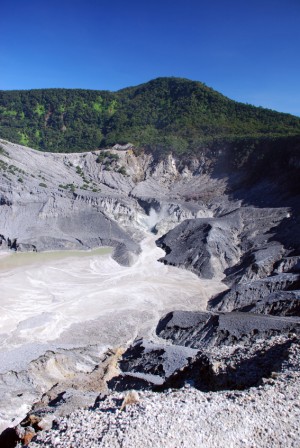A Place Beyond White Sands and Clear Oceans: Trekking Through Indonesia
“I didn’t move to Bandung because I wanted to live in Indonesia. I moved to Bandung because I wanted to live in Bandung.”
Spoken by Thomas, a long-term German ex-pat, this sentiment sums up the feelings of many of the foreign residents in said city, who I met with one night at a loosely-defined Mexican resto-bar.
“Many cities on Java are like crowded ovens, all concrete and stale, hot air,” Thomas continued. “I came to Bandung because I heard it was different from all that; cool climate, good air…a city I could live in.”
When most of us think of Indonesia, we think of tropical jungles, exotic wildlife, and killer beaches. The archipelago is a strange case of a country where the largest, most populous island (Java) is overshadowed by numerous smaller ones. If people aren’t thinking of beach paradise Bali, they’re likely imagining the jungles of Sumatra and Borneo, or creatures like orangutans and Komodo dragons.
Yet Java is defined by its cities. National capital Jakarta alone has 9 million people and is every bit the sweltering concrete jungle as other Asian metropolises. Other cities on the island, like Surabaya, are similar in design and feel, but the West Java capital Bandung is an anomaly amongst them.
Located 2,500 feet above sea level, Bandung is a city of hills and surprisingly moderate temperatures. While the days still get hot and sunny, nights cool down to comfortable levels. The highest parts can even get downright chilly, helping to lend Bandung a unique air from other Indonesian cities.
The mountainous nature of the place also contributes to its unique visual beauty, a wonderful fusion of old Europe and new Pacific. The pervasive inclines make Bandung an initially intimidating city to navigate, but instill it with an excellent sense of scope, wherever you are. This, combined with some old architecture, helps to explain Indonesia’s Old Dutch rulers’ affinity for the city, which they named, “The Paris of Java.”
As the third largest city in Indonesia, Bandung offers various ways for tourists to kill their time – there’s a zoo, traditional wayang puppet theatre performances, and a museum dedicated to the 1955 Asia-Africa conference that was held there. For those looking for more low-brow, novelty tourism, there’s “Jeans Street,” a shopping area which uses giant plaster statues of science-fiction icons like Wolverine and the Terminator to draw in customers.
Yet the undisputed highlight of visiting Bandung lies just outside the city proper in the form of Tangkuban Perahu, a mildly-active volcano roughly 20 miles from the city. I’d been anticipating it as much as anything on my Indonesian trip, so I set off for it on my second morning in town by angkot, the standard form of public transportation in the area which is most reminiscent of a mini-bus.
Despite having already spent five days, including a great two nights staying with a local couple in the city of Bekasi, I was still wary of being scammed or otherwise done dirty at this point. It had nothing to do with the nation’s Muslim majority and everything to do with being a lone Western tourist in Southeast Asia, where people often can’t help but try to rip solitary Western tourists off. Between that and a mildly upset stomach from drinking too much Indonesian coffee too fast, I was at the mercy of menacing vibes while I waited for the shoddy, crowded vehicle to take off.
Not long into the trip, a heavy rain came over the angkot, and I’d not brought an umbrella. Still, the cooling effect of the rain on the air was a great relief from the body warmth and overheated metal floor of the mini-bus. It was around that time that I put on my headphones, and my skepticism began melting away as anticipation took its place.
By the time I made the inevitable travel decision and switched to a Grateful Dead set I’d been into of late, I was beaming with optimism. The synchronicity I began to experience just escalated it higher and higher – as we climbed a particularly steep road, I connected with the music’s scaling sense of triumphant joy in a way I never had before, and the first peaks of sunlight started to peer through the still ongoing storm.
By the time the angkot let me off, outside of the entrance to Perahu, the rain had all but finished, leaving only cool mountain air for my climb. I realized that of the dozen or more people on the ride, I was the only one getting off for the volcano. I shrugged, thinking it was just another day at what locals may find a tired tourist spot. Perhaps, I’d have the mountain more or less to myself. I was quickly proven wrong again – just because those particular Bandung residents weren’t visiting, didn’t mean other Indonesians weren’t.

